Avi's Blog, page 11
October 24, 2023
Inviting People to Come In
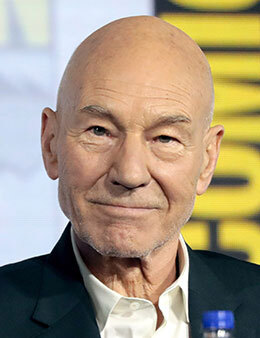 Patrick Stewart [photo credit: Gage Skidmore, Wikipedia]
Patrick Stewart [photo credit: Gage Skidmore, Wikipedia]I was watching the evening TV news today, catching up on the latest daily horrors, when along came an interview with the British actor Patrick Stewart. Most folks know of him because of his long-standing starring role in the Star Trek franchise, as well as his work in the X‑Men. However, now 83, he has had a long life as a stage and film actor, with particular success in classic British plays. The interview I watched was focused on Stewart’s just-published memoir, Making it So.
I never saw him on the stage, and if I watched any of those Star Trek episodes with my kids, I have no memory of it. In any case, I was being with my boys, not really watching him.
This interview, however, ranged over his full career, how he became an actor — when still a boy — and the way acting became part of his personal life, not so much as an extension, as fulfillment. At one point, talking about acting, he said,
“I wanted to bring the audience into our world. I was never interested in thrusting out, but just inviting people to come in and share what we were experiencing.”
That made me sit up, replay the interview, and get the transcript. Because his words — “inviting people to come in” — which were about acting — said something very important, I think, about writing fiction.
Earlier that day, working on a new book, what I was trying to do was the same thing — drawing the potential reader into the experience I was unfolding.
The book, the story I was creating, was not about me, but about invented (but realistic) people, their lives, their evolution, their emotions, and their experience. I was trying to write in such a way that the reader could come into those lives.
Too often we talk about writing as if it is self-expression, dealing with our own demons or delights. No doubt that is part of it. But perhaps more importantly, writing can provide new experiences for the reader.
 Donald Hall [photo credit: Houghton Mifflin Harcourt, Library of Congress]
Donald Hall [photo credit: Houghton Mifflin Harcourt, Library of Congress]I’ve related this before, but I will bring it forward again. What follows is something I heard Donald Hall, US Poet Laureate, and writer of picture books, say at a literary conference.
“What the writer tries to do, metaphorically speaking, is create a complete circle. But the circle is never complete. It has a gap, like the letter C. If that gap is too big, the reader cannot complete it. If it is too small, there is no need for the readers to complete it. But make that gap just right, and the reader can fill it with her/his own experience and the circle is complete.”
Which brings me to my own mantra: Writers don’t write writing. They write reading.
October 17, 2023
I Need to Decide Soon
“Would you tell me, please, which way I ought to go from here?”
“That depends a good deal on where you want to get to,” said the Cat.
“I don’t much care where —“ said Alice.
“Then it doesn’t matter which way you go,” said the Cat.
“— so long as I get SOMEWHERE,” Alice added as an explanation.
“Oh, you’re sure to do that,” said the Cat, “if you only walk long enough.”
― Lewis Carroll, Alice in Wonderland
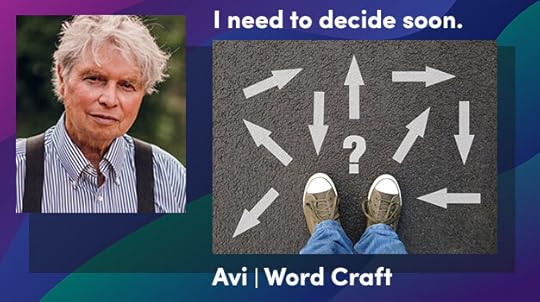
For any particular piece of writing—novel, short story, poem, play—there is any amount of comment, response, and reflection both positive and negative. It is rare however for the question to be raised, “WHY did the writer choose to write that?” Because the fact is at some point the writer did decide what to write.
Over the years I’ve met a number of good writers, and we have this exchange:
Me: Are you working on anything now?
Author: I’m trying to come up with an idea.
In that regard, I’ve been very lucky insofar as I rarely lack ideas. The hard part for me is choosing which idea I should commit to. Let it be admitted, a few times I’ve made the wrong choice, that is I’ve started a book, and then abandoned it because it wasn’t working.
There are so many reasons (or emotions) for choosing what to write. It’s a vital choice. Speaking for myself, if I embark on a new novel, I am about to engage in a project that will consume my thoughts and energy for at least two years, the average time from first words on paper, to published book in hand.
[That said, I worked on Bright Shadow, on and off for fourteen years. S.O.R. Losers was written in one day. The shortest time from the first word on paper to the bound book in hand was Encounter at Easton. Eleven months.]
But when I choose what to write means I’m inviting a mental roommate to move into my head for a long period. It’s hard to work on a book—it has happened—when you stop enjoying writing it. But when you enjoy it, I look forward to working on it each day.
There are many, many reasons for choosing a particular project: It seems exciting. It has great possibilities. It would be fun. It would be a fascinating challenge. It would be highly commercial. It’s what my readers have been asking for. My readers have liked this kind of book before. Nobody has written about this before. It would make a great sequel. It’s what my publisher has asked for. My editor suggested it. It just feels right.
I’m sure you could add to the list.
There is another fundamental consideration: I make my living by writing, supporting myself and my family. So, you may add to the questions above, “If I write the book can I sell it to a publisher?”
I’m writing this now because I am trying to decide upon which project, I shall embark on next. Right now, I have two ideas, ideas that are radically different from the other.
Knowing myself the choice I make will be an emotional one. What do I want to write?
I need to decide soon.
October 10, 2023
Art is never finished

I had worked on the book for at least a year, working on it every day, sometimes for hours, sometimes just for minutes, but always and always. There was the research. The thinking about it. The writing. The endless revisions, the notes, the talks with my editor that brought on new revisions, ongoing changes, cuts, expansions, the whole gamut of good writing practices. Then there was the copyediting, and the page proofs, all of which brought on more thought, and more changes. All these were actions which in no way were unusual. It was the process by which I wrote every one of my books until it was done.
And when it was done, I moved on to the next project and began the whole process once again.
But then came the day when a package arrived. It was from my editor and consisted of that book itself, printed, bound, and jacketed in its bright new cover.
How fine! How exciting! (It always is.)
Then I opened the book and read the first paragraph. No sooner did I do that than I realized I had left out a sentence, a sentence not required, not ever written, but a sentence which would have made a great difference to the book.
But it was too late. The book was in my hands, a published book.
How disappointing.
Was this a unique experience?
Not at all.
In all my years of writing and publishing whenever I have looked at a “finished book” I have always, always, always, found something that could have made the book better. It is not necessarily a significant thing — usually, it is rather small — but it is something that would have enhanced the text.
Too late.
This is not because I rushed things, or hastened to meet a deadline, or was sloppy, but because it is the nature of art, any art, never, ever to be truly done.
Sometimes — in my experience — the realization comes just after I submit a manuscript to my editor. “No, no, wait,” I hasten to inform the editor. “Don’t read that, read this version.” It drives my editors crazy.
Writing — as with any art — is always frustrating. Even when praise is heaped upon the artist — and that does happen — the artist knows it could have been better. To create good art is also to be humbled.
One is haunted: “It could have been better.”
Consider Leonardo De Vinci, surely one of the very best artists. Yet it is to him that is attributed the phrase: “Art is never finished, only abandoned.”
October 3, 2023
Promoting Books

In the September 2 issue of The Economist, in their “Culture” section, there is a long article about the publishing industry in both the UK and the USA. The gist of the piece is that while publishing likes to promote its devotion to “literary fiction” whatever that means, the books that pay the publisher’s bills and make a profit are overwhelmingly romance novels and thrillers. Moreover, authors of such books are prolific. James Paterson is credited with writing 340 books albeit some with other writers. Danielle Steel has written over 200.
But—the point of the article—the publishing world doesn’t like to talk about this.
These days it costs, apparently, between fifteen to nineteen thousand dollars to produce a book, and to earn that investment back a book must sell at least five thousand copies. In Britain only 0.4% of titles sold that number. (No reference to USA numbers in that regard but it’s probably not so different).
Simultaneously the world of publishing is going through a major change in regard to the way books are being promoted. When I first started publishing in 1970, the publisher did almost all of the marketing.
[That said, years ago I published a book and the publisher belatedly let me know they had forgotten to send out any books for review or marketing.}
Back then, the only marketing writers did were in-person book tours, conferences, bookstores, libraries, and schools.
Almost all of that is gone. Social media has become the chief marketing tool, and much of that comes from the writers themselves. The covid pandemic did much to induce that, but it was beginning to happen prior to that. A publisher let me know that even the number of book reviews in publications has radically declined.
Not long ago a publisher bragged to me that one of his recent bestsellers became so without any publishing marketing at all—all social media.
To me, the most interesting part of the Economist article are comments by such people as Markus Dohie (the head of Penguin/Random) and Jonathan Karp (head of Simon & Schuster) that “Taking credit for a bestseller is like taking credit for the weather (Karp). And “Bestsellers are random.” (Dohie).
I am reminded of what the British writer Somerset Maugham was once quoted as saying, “There are three rules for writing a novel. Unfortunately, no one knows what they are.”
The message to writers is clear. The best you can do is write your best. And then see what happens. But do keep in mind what writer G.K. Chesterton said: “A good novel tells us the truth about its hero; but a bad novel tells us the truth about its author.”
September 26, 2023
A Sequel after Twenty-Three Years
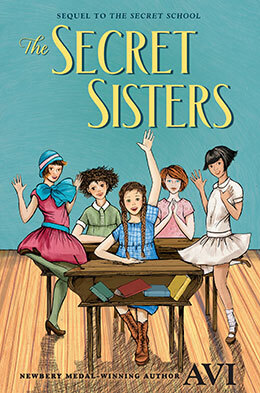 Sequels are hard to write. Readers who turn to them not only want a logical extension of the original story and characters, but they also wish to go deeper and to new places even as they want something just as good, or better. At the same time, there will always be new readers who come upon the sequel as a stand-alone story.
Sequels are hard to write. Readers who turn to them not only want a logical extension of the original story and characters, but they also wish to go deeper and to new places even as they want something just as good, or better. At the same time, there will always be new readers who come upon the sequel as a stand-alone story.
Sequels need to replicate the many facts and conditions of the original volume, everything from the age and eye color of your protagonist to the language patterns they use.
All this becomes even harder if you wait twenty-three years to write the sequel. Thus it was with The Secret Sisters, my newest published book. It’s the sequel to The Secret School, which first came to readers in 2000.
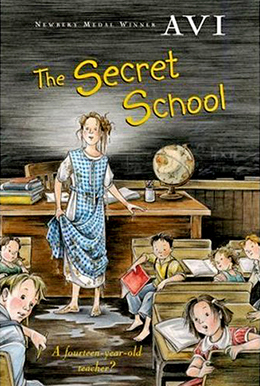
The Secret School had its genesis in a bookstore in Indianapolis when the owner told me that when she was a fourteen-year-old girl in rural Iowa, she received a special driver’s license that allowed her to drive back and forth to her one-room schoolhouse. Furthermore, since she was short, she sat at the wheel, while her younger brother sat at her feet to work the brake and shift the gears.
That is the way The Secret School begins.
The story came into print because Breakfast Serials, a publisher of newspaper serials, had asked a well-known writer to supply a serial story. When he gave up on the attempt, I was asked to write the story and remembered that Iowa tale.
Illustrated by Brian Floca, The Secret School would appear in 301 newspapers across America.
In an expanded version—without illustrations—it was published in book form in 2001.
(You can read more about the book in a blog post, “Everything about The Secret School,” here on my website, July 27, 2021.0
Over the years, even as the book remained popular, the original publisher was sold to another publishing company, and then a third. However, the book, hardcover, and paperback, were always available. It was the third publisher, Clarion, now a HarperCollins imprint, that requested I do a sequel.
Once I agreed to do so I went through the original text and noted all the facts I created about Ida, my protagonist. Color of hair, height, family names, location of home, and much more.
My editor and I discussed at length what the focus of the story would be. I first suggested the notion of a high school girls’ basketball team. Research quickly told me the game was utterly different than what is played today with 1920’s rules designed to minimize movement. Girls were not to exert themselves. That was not going to work for me.
I shifted my ideas and gradually developed a different line of thought and plot, which has found early, happy readers. Here’s one from Goodreads:
“When I first took the position as the elementary school librarian in our small town, the former librarian told me to never discard any book written by Avi. [His] latest middle-grade novel … is a wonderful book to introduce young readers to the fascinating genre of historical fiction. Ida Bidson has a dream to become a teacher and the only way this can happen is if she is willing to move to another town to attend high school, be a boarder in a new home, and learn to deal with an old-fashioned, stuck-in-his-ways principal.
To help adjust to her new surroundings Ida quickly becomes a part of a new club called The Secret Sisters. With her five friends and the help of some kind and strong female role models, Ida becomes determined to define her own place amidst old rules and new ways in the Roaring Twenties.
This book is pure, engaging, and a delight to read. I highly recommend it!”
As you can guess this was most satisfactory for this writer, and hopefully my readers.
September 19, 2023
Colorado, the Centennial State
I found the map in a portfolio of old maps at the back of a used bookstore in Boulder Colorado. It’s an 1876 map of the then-new state of Colorado, published by the map-making company of Asher & Adams, as they styled themselves. 1876 being the one-hundredth anniversary of the Declaration of Independence, the new state took on the nickname “The Centennial State.”
The map now hangs on the wall of my log home in Clark, Colorado. If you look at the map and seek where I live, and its main and largest community, Steamboat Springs, the map informs me there is nothing there, save the Bear (or Yampa) River and the Elk River. The immense, empty area is referenced as Grand County, which still exists but with much-reduced boundaries. These days the county in which I live is called Routt County, larger than the State of Rhode Island.
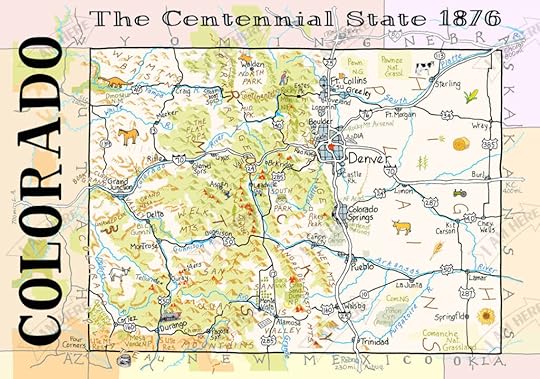 Although not the map on my wall, this is a good map drawn by Gregory Mitchell of The Centennial State, available from I Am Here.
Although not the map on my wall, this is a good map drawn by Gregory Mitchell of The Centennial State, available from I Am Here. The Ute, Arapaho, and Cheyenne Indians were the original occupants of the area until they were forcibly removed. Over the years, Spain, Russia, Mexico, France, and the USA all claimed sovereign rights. The French and Anglo fur trappers were active in the territory in the early 19th Century. 1875 was the time when the first white settlements were recorded. In time it would become a mining, ranching, and ski resort area. In 2000 Steamboat Springs recorded a population of about six thousand. Today it’s about fourteen thousand.
Steamboat Springs is said to have earned its name when French trappers heard the gurgling sounds of the area’s many natural hot springs and thought they were hearing steamboats.
The area is also the inspiration for a number of my books.
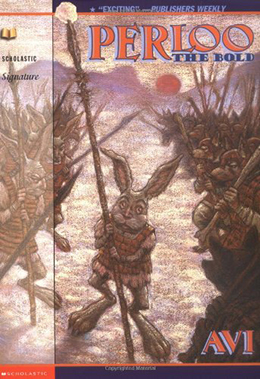

 1998—
Perloo the Bold
1998—
Perloo the Bold
Written for my skier/snow-boarding sons, it’s an adventure fantasy about the Montmers, rabbit-like creatures with long feet that enable them to ski among the mountains.
2000— The Secret SchoolWhen a Routt County 1925 one-room schoolhouse loses its teacher, the eight students choose 14-year-old Ida to run the school secretly so they can graduate.
2001— The Good DogMcKinley, an Alaskan Malamute, who lives in Steamboat Springs, has to choose between joining a wolf pack and protecting his dog community as well as his human family.
2008— Hard GoldA tale of the Colorado Gold Rush of 1859.
2015— Old WolfNashoba, an old wolf, the raven Merla, and Casey, a teen-age boy, struggle with life and death along the edges of Routt National Forest. Illustrated by Brian Floca.
2023—The Secret SistersA sequel to The Secret School, Ida, having earned the right to go to Steamboat High School, moves from a rural world to encounter the fast-changing roaring twenties world of 1925, and struggles to become a modern young woman.

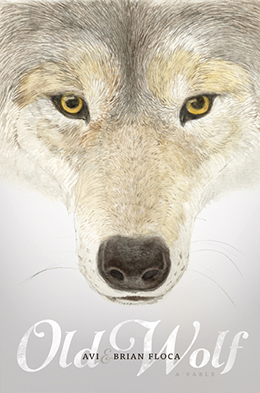

September 12, 2023
We get letters
Letters from my readers are always treasured (and answered). They provide vital support and proof that invisible bookworms are alive and well and reading my books.
I don’t often share these letters. But the two recent letters below are everything a writer could ever desire. I’ve never been touched so much as these have done. They don’t just warm the heart, they make all my life’s work worthwhile. “Thank you,” is too small a response. They give my writer’s life meaning.
From the young reader:
/*! elementor - v3.16.0 - 12-09-2023 */.elementor-widget-image{text-align:center}.elementor-widget-image a{display:inline-block}.elementor-widget-image a img[src$=".svg"]{width:48px}.elementor-widget-image img{vertical-align:middle;display:inline-block}
Dear Avi,
Me and my mom loved the Poppy Books! They were funy and had a lot of adventures! Ereth is my favorite bekus he swears so much. Now I think mice books are the best books.
From: E—
From the reader’s mother:
Dear Avi,
My daughter E—(7) and I, just finished reading the whole Poppy series. We read your books every night before bed for the last five months and absolutely adored every single one of them. It can be tricky to find high-quality literature that has content that is age appropriate for little ones. Your books delivered, and then some! I love how beautifully descriptive your writing is and we often stopped to talk about the rich vocabulary you use. The characters you created are truly delightful. Ereth brought on many sessions of uncontrollable laughter, and we would hear Daddy calling up the stairs “Are you sure you are getting ready for bed?”
Reading your books created the most wonderful memories for us that I will treasure for the rest of my life. A few key phrases have stuck and are used regularly around our house, The favorites being “Oh belching beavers,” “hit the puke button, and duck.” “Put the kids in the rear, blow some wind, and turn on the fan.” “Keep your pit in your olive,” and whenever someone doesn’t feel well we always ask, “Are you going to uncork your guts?” Even as I write this my family is reading over my shoulder, shouting out phrases and giggling.
Thank you for sharing these stories with the world. They will be forever cherished.
Sincerely,
T
P.S. “A Mouse Will A‑roving Go” has been listened to many times and is often sung as a lullaby at bedtime.
September 5, 2023
Advice and criticism always help
During this past summer, I invited a number of very accomplished writers to share a book about writing that they have found particularly meaningful and useful. It has fascinated me that with two exceptions (Forster’s Aspects of the Novel and Goldberg’s Writing Down the Bones) different books have been cited. (The 14 articles in the 2023 Summer Blog Series begin here.)
I suspect we all know there is no one way to write, and that every writer needs to find her/his way to work and create stories. This list of recommended titles by fine writers proves that.
Yes, it would be most instructive to go through all these books and see what they have in common. It would be a huge, time-consuming task, which, I hasten to say, I have no intention of doing. Be my guest.
There is, moreover, that old cliché, “The proof of the pudding is in the eating.” This has been defined as “the real value of something can be judged only from practical experience or results and not from appearance or theory.”
So for all you writers (and readers)—including myself—may I suggest, if your writing works, it works. But—my experience is that advice and criticism always help.
Here are the books cited.
Aspects of the Novel. E.M. Forster
Becoming a Writer. Dorothea Brande
Bird by Bird. Anne Lamott
Land of the Dead. Brian McDonald and Toby Cypress
Save the Cat Writes a Novel. Jessica Brody
The Secrets of Story. Matt Bird
The Sound on the Page. Ben Yagoda
Story. Robert McKee
A Swim in the Pond in the Rain. George Saunders
The Writer’s Journey: Mythic Structure for Writers. Christopher Vogler
Writing Down the Bones. Natalie Goldberg (2)
Writing Fiction. Janet Burroway and Elizabeth Stucky-French
Writing for Story. Jon Franklin
Writing with Pictures. Uri Shulevitz
(Click on a cover to read the article by the author who chose that book.)
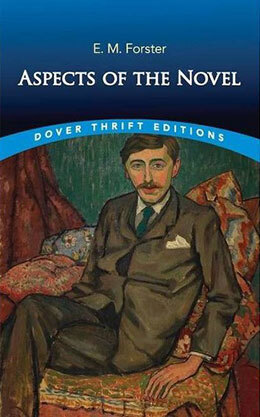
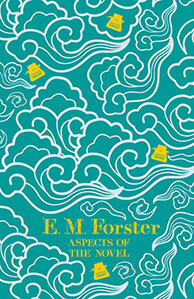

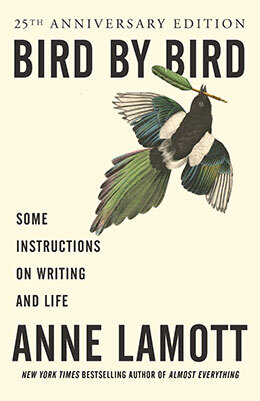

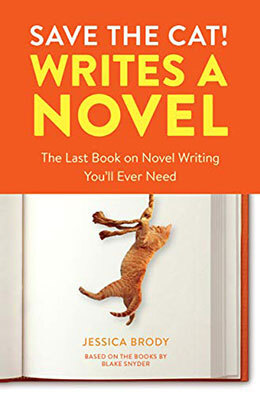
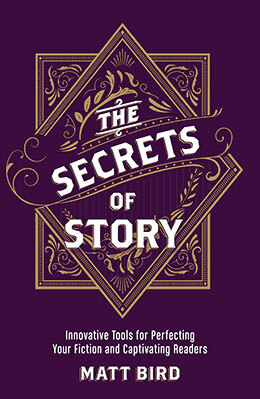
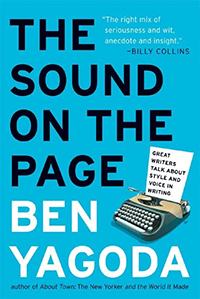
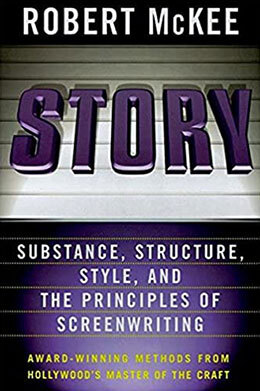

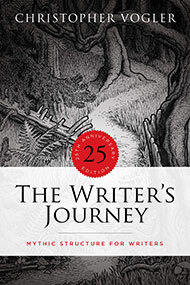
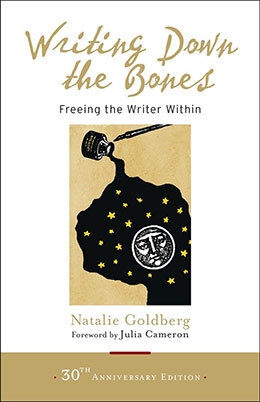

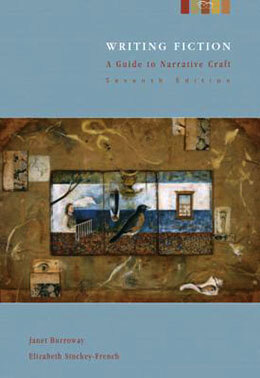
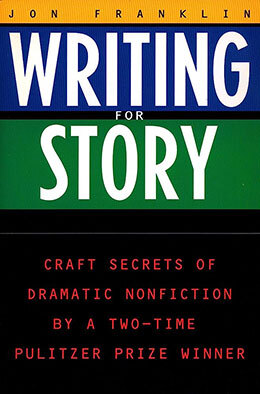
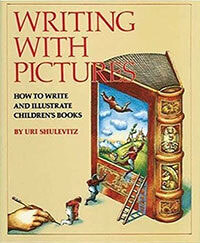
August 29, 2023
Summer Blog Series: Janet Tashjian
From Avi: As I did last summer, I’ve invited 13 admired middle grade authors to write for my blog for the next three months. I hope you’ll tune in each Tuesday to see who has answered these three questions. You should have a list of terrific books to read and share and read aloud by the end of the summer … along with new authors to follow!
Your favorite book on writing:

This question is a slam-dunk for me. Writing Down the Bones by Natalie Goldberg is the number one book about writing that I recommend when people tell me they want to be writers or want to help their students become better writers.
Natalie’s lifelong training as a Buddhist, sitting in meditation for hours at a time, is the perfect metaphor for the steadfastness, focus, and persistence the act of writing requires. The book’s short chapters are filled with anecdotes and writing prompts in the simplest of language, which is of course the most difficult kind of writing to do. When I first started out as a writer, I studied in Natalie’s workshops many times and always walked away with a clarity of purpose that can only come from putting pen to paper. (I still write all my books in longhand; Natalie does too.) It’s a bullseye from a Zen archer, a book that comes along very rarely. If you’re looking for a book on craft, this isn’t it. But if you’re looking to uncomplicate the writing process and take control of your monkey mind, this is the book for you.
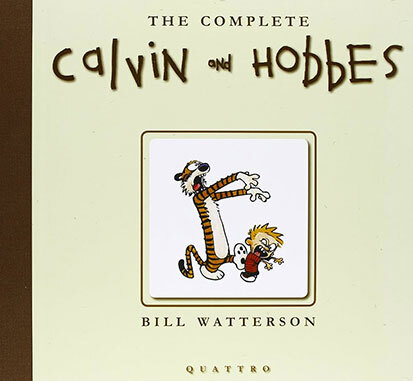

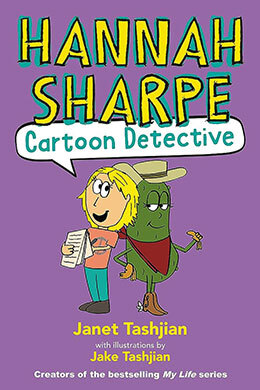 Reading aloud:
Reading aloud: I am a giant fan of reading aloud and am constantly trying to corral willing participants into my daily reading. (I’m currently making my way through The Complete Calvin and Hobbes, which I recommend wholeheartedly.)
As far as my own books, it’s a toss-up between Marty Frye, Private Eye and Hannah Sharpe Cartoon Detective. Marty Frye is a good one because the main character is a poet detective who makes up rhymes while he solves crimes, so the text usually has kids laughing at the character’s absurd couplets. Laurie Keller’s wacky drawings make a funny story even funnier.
Hannah Sharpe Cartoon Detective tells the story of a girl on the autism spectrum trying to handle the many curveballs life throws at her in a day. It’s a good read aloud similarly because there are funny pictures to share — this time by my son, Jake. But it’s also a story that resonates with kids — not just those on the spectrum — about the daily struggle to self-regulate. Whenever I’ve read this book aloud to kids, the looks of recognition and identification with Hannah make me realize her story was an important — and humorous — one to share.
Where do you write most often?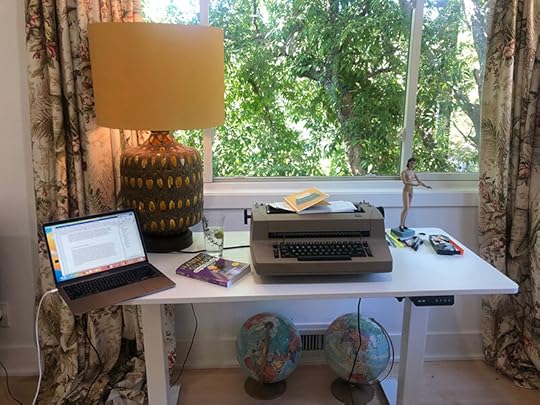 Particulars
Particulars 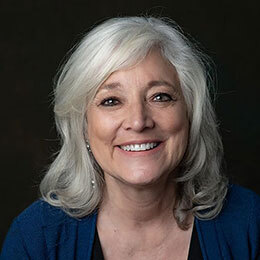
Janet Tashjian
Home Twitter Instagram Facebook
Ethan Long recommends Hannah Sharpe, Cartoon Detective: “Hannah Sharpe is courageous, smart, talented, and funny as she navigates the complexities of the mystery at hand, as well as her life on the autism spectrum. Bravo to Janet and Jake Tashjian for making Hannah Sharpe a role model not just for the neurodiverse but for neurotypicals, too.”
August 22, 2023
Summer Blog Series: Gennifer Choldenko
From Avi: As I did last summer, I’ve invited 13 admired middle grade authors to write for my blog for the next three months. I hope you’ll tune in each Tuesday to see who has answered these three questions. You should have a list of terrific books to read and share and read aloud by the end of the summer … along with new authors to follow!
Your favorite book on writing:I have lots of faves. My newest favorite is: A Swim in a Pond in the Rain by George Saunders. Though, right now the writing book I have in front of me is: The Writer’s Journey: Mythic Structure for Writers by Christopher Vogler. I tend to use writing books to inspire me to think differently about a problem. I don’t follow them like recipe books.


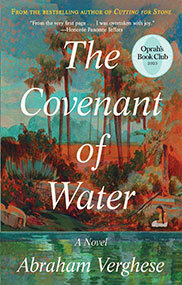 Reading aloud:
Reading aloud: I adore audio books. Right now, I’m listening to The Covenant of Water by Abraham Verghese. I got it because his previous novel, Cutting for Stone, is so incredibly unbelievably good. (Even my husband loved it and we almost never enjoy the same books.) I listen to audio books while I’m walking my dog, and since I have a big dog and no yard, I spend a lot of time listening.

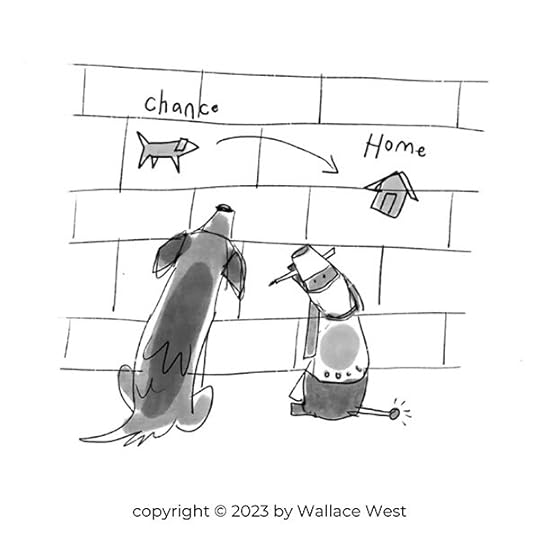 Chance and Metal Head, characters in the upcoming Dogtown,
Chance and Metal Head, characters in the upcoming Dogtown,written by Katherine Applegate and Gennifer Choldenko, illustrated by Wallace West,
published by Feiwel & Friends, Macmillan.
Also, I‘ve found the best way to find little bumps, awkward phrases, and irksome repetitive words in my works-in-progress is to read my work out loud. So, I read each novel I write out loud multiple times during the writing of it. All this to say: the sound of a book is very important to me. All of my novels are written to be read-alouds, though I am especially excited about Dogtown which I wrote with Katherine Applegate. We read that one out loud over and over again. We wanted the words to roll off your tongue when you read them. It will be out September 19. If you read Dogtown out loud, please do tell me what you think.
Where do you write most often?I have an office but since the Pandemic, I’ve been writing mostly in the living room with the dog. Though sometimes … strange as this may sound … I write in my car. That is where I am right now as a matter of fact.
My hands down favorite place to write? The airport. Writing in the airport is like a big spoon that stirs up my brain.
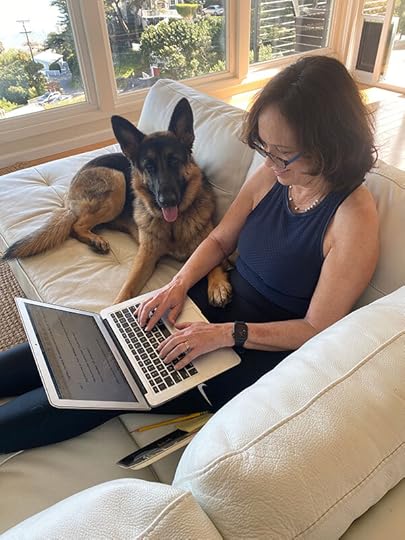 Particulars
Particulars 
Gennifer Choldenko
Home Twitter Instagram Facebook
In a starred review, Publishers Weekly said about One-Third Nerd, “It is Liam’s quiet thoughtfulness and relationship with his sisters, especially his interest in their lives—Izzy’s Down syndrome social group “the Forty-Sevens” and Dakota’s impulsive experiments—that let him shine just as bright as his two extroverted sisters.”
Avi's Blog
- Avi's profile
- 1703 followers



